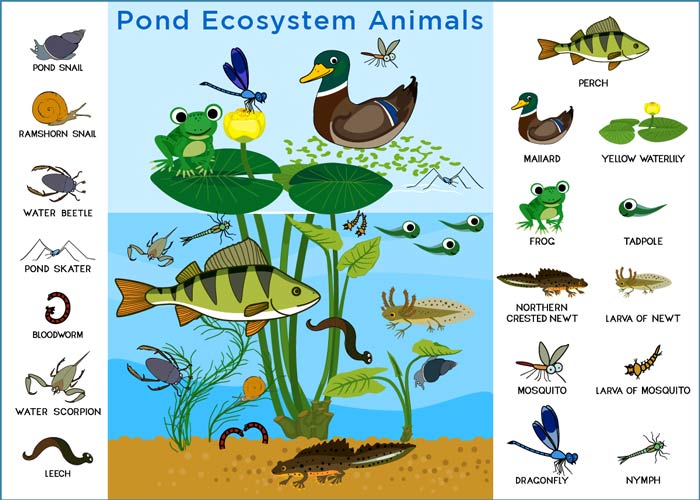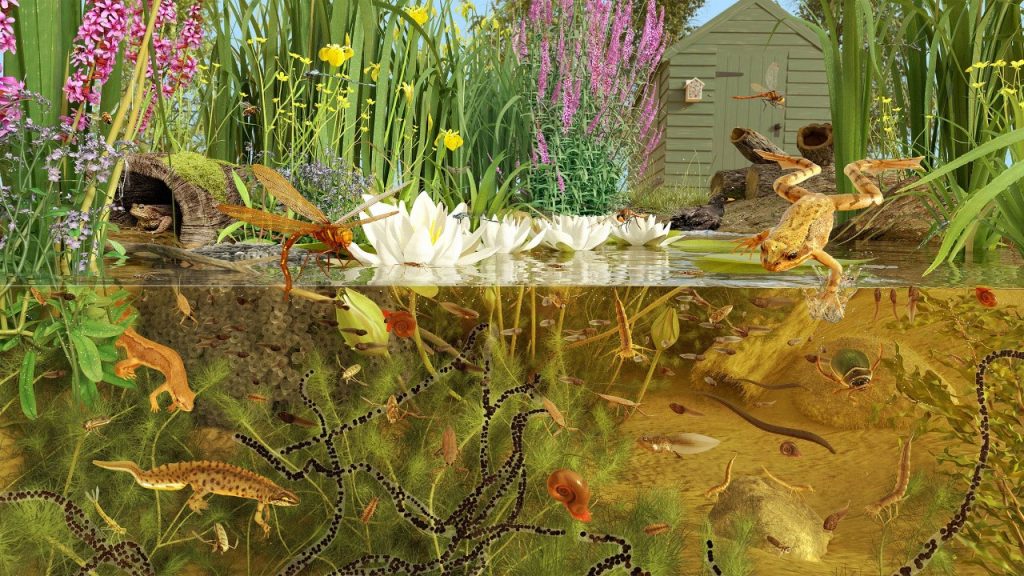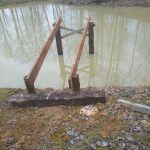Ponds are teeming with life, hosting a diverse array of fascinating creatures. These aquatic ecosystems provide a habitat for a wide variety of animals, from tiny insects to larger mammals. Let’s dive into the enchanting world of pond animals and discover the amazing species that call these watery habitats home.
1. Fish
One of the most common animals found in ponds is fish. Fish species such as goldfish, koi, catfish, and sunfish thrive in the calm waters of ponds. These aquatic creatures play a crucial role in pond ecosystems, helping to control insect populations and maintaining the balance of the ecosystem.
2. Frogs and Toads
Frogs and toads are iconic inhabitants of ponds, known for their distinctive croaking sounds. These amphibians lay their eggs in the water, and their tadpoles develop into adult frogs or toads. Frogs and toads are important predators in pond ecosystems, feeding on insects and helping to keep populations in check.
3. Turtles
Turtles are another common sight in ponds. These reptiles can often be seen basking on rocks or logs near the water’s edge. Turtles play a vital role in pond ecosystems by consuming algae, aquatic plants, and insects. They are also prey for larger predators, contributing to the food chain in the pond.
4. Dragonflies and Damselflies
Dragonflies and damselflies are beautiful insects that are commonly found around ponds. These flying creatures have long, slender bodies and intricately patterned wings. Dragonflies and damselflies are voracious predators, feeding on mosquitoes and other small insects, making them valuable allies in controlling pest populations.
5. Snails
Snails are slow-moving creatures that play an essential role in pond ecosystems. These mollusks help to clean up the pond by consuming algae and decaying plant matter. Snails are an important food source for many animals in the pond, contributing to the overall biodiversity of the ecosystem.
6. Waterfowl
Waterfowl such as ducks, geese, and swans are frequent visitors to ponds. These birds are attracted to the water as a source of food and shelter. Waterfowl play a crucial role in dispersing seeds and nutrients throughout the ecosystem, contributing to the health and diversity of pond life.
7. Aquatic Insects
Ponds are home to a wide variety of aquatic insects, including water beetles, water bugs, and mosquito larvae. These insects have adapted to life in the water and play essential roles in the pond ecosystem. They serve as food for larger animals and help to break down organic matter, recycling nutrients in the ecosystem.
8. Salamanders
Salamanders are amphibians that can be found in and around ponds. These fascinating creatures have slender bodies and long tails, making them excellent swimmers. Salamanders feed on insects, worms, and small fish, contributing to the balance of the pond ecosystem.
9. Water Snakes
Water snakes are common inhabitants of ponds, using the water as a source of food and shelter. These non-venomous snakes feed on fish, amphibians, and insects found in the pond. Water snakes are important predators, helping to control populations of small animals and maintain the health of the ecosystem.
Credit: www.enchantedlearning.com
10. Crayfish
Crayfish, also known as crawdads or freshwater lobsters, are crustaceans that inhabit ponds. These creatures resemble small lobsters and play a vital role in the pond ecosystem. Crayfish feed on plant matter, algae, and small animals, helping to keep the pond clean and balanced.

Credit: www.earthreminder.com
Conclusion
Ponds are rich and vibrant ecosystems that support a wide range of animal life. From fish and frogs to turtles and dragonflies, each creature plays a unique role in maintaining the health and balance of the pond ecosystem. By preserving and protecting these habitats, we can ensure the survival of these fascinating pond animals for generations to come.





